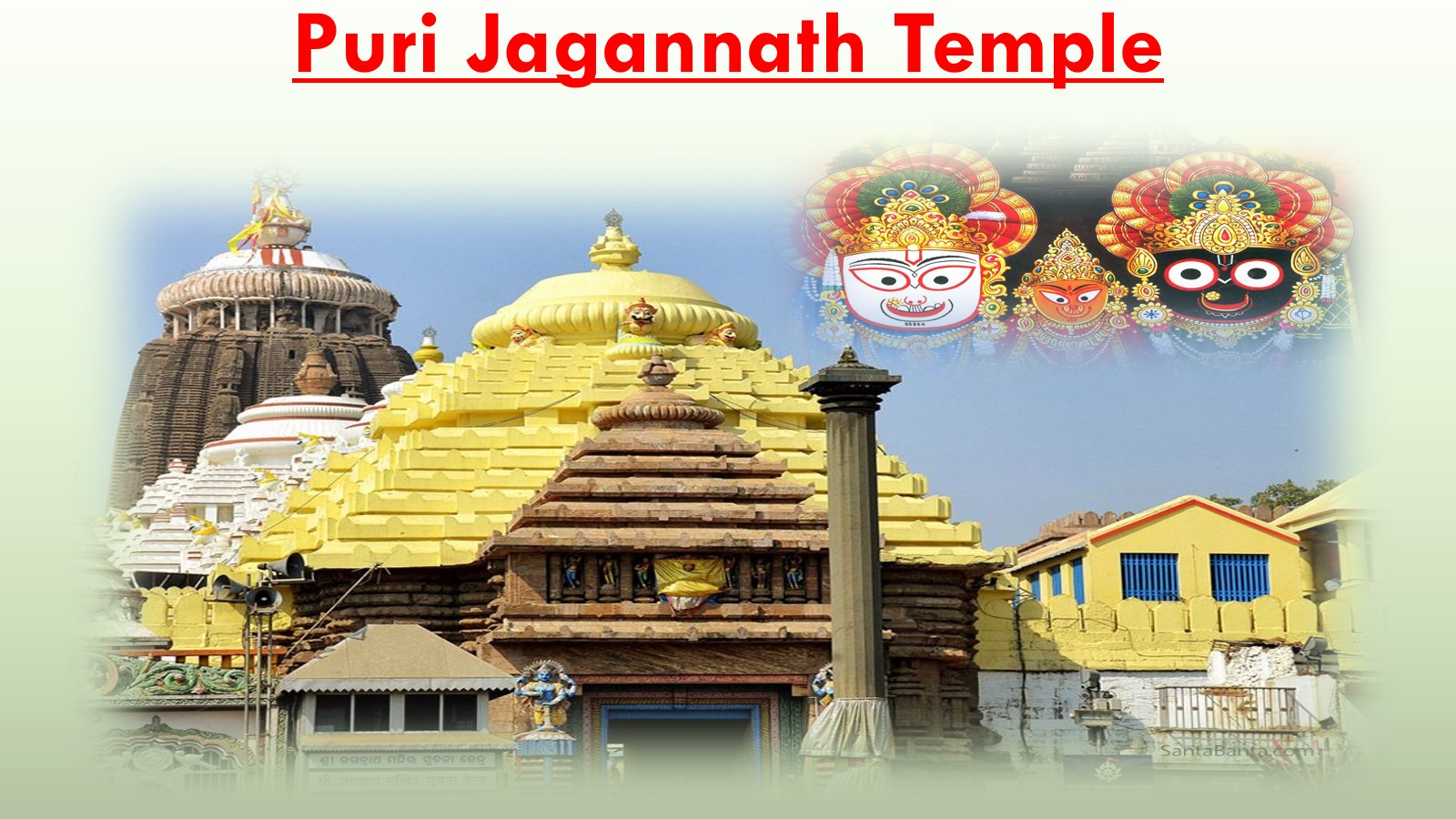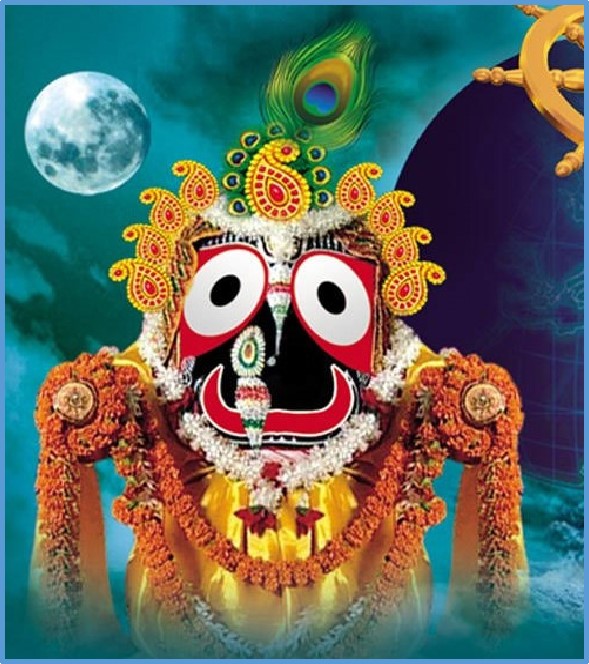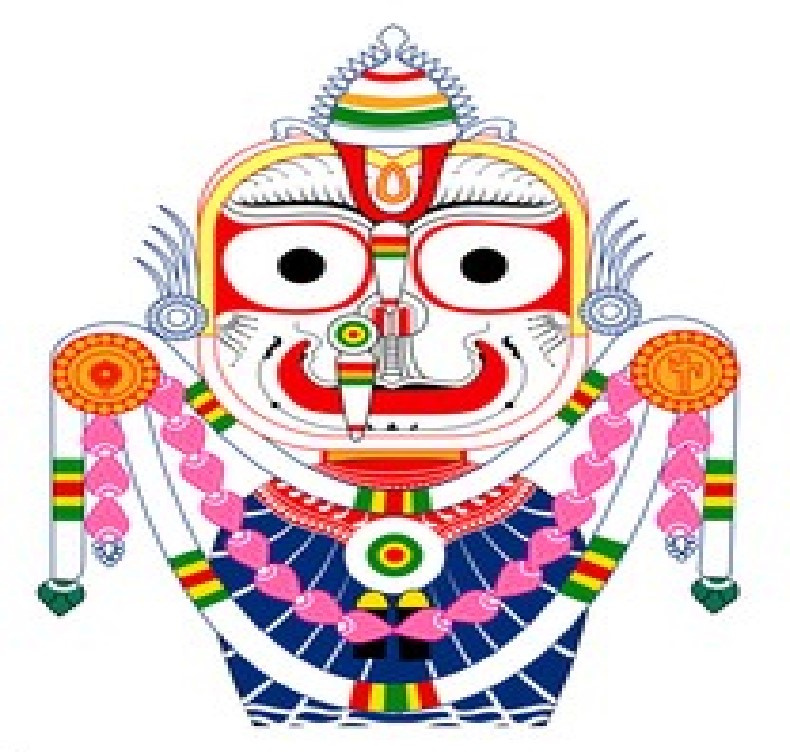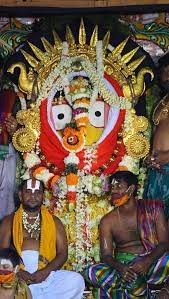Puri Jagannath Temple (Lord Jagannath, Lord Balabhadra and Goddess Subhdra)
About Puri Jagannath Temple:
Puri Jagannath Temple, also known as Jagannath Temple or Sri Mandira, is a famous Hindu temple located in the coastal city of Puri in the Indian state of Odisha. It is one of the Char Dham pilgrimage sites of Hindus and is dedicated to Lord Jagannath, a form of Lord Vishnu.
The temple is famous for its religious significance, architectural grandeur and the annual Rath Yatra festival. It is believed to have been built by King Anantavarman Chodaganga Deva of the Eastern Ganga dynasty in the 12th century. However, the present structure of the temple was built in the 12th century by King Ananga Bhima Dev.
The temple complex covers an area of over 400,000 square feet and is surrounded by a high fortified wall known as Meghnad Pacheri. It consists of four main structures: Vimana (main temple), Jagamohana (assembly hall), Nata Mandir (dance hall), and Bhoga Mandapa (presentation hall).
The main deity of the temple is Lord Jagannath, who is worshiped along with his siblings, Lord Balabhadra (his elder brother) and Goddess Subhadra (his younger sister). The idols of these deities are made of wood and are replaced by new idols every 12 to 19 years during a ritual called Navakalevar.
The annual Ratha Yatra, or Chariot Festival, is the most famous event associated with the Puri Jagannath Temple. During this festival, the deities are taken out of the temple and placed on large chariots, which are pulled by thousands of devotees through the streets of Puri. The Rath Yatra attracts lakhs of pilgrims from all over the world who come to witness the grand spectacle.
The Puri Jagannath Temple has immense religious significance and is considered one of the holiest shrines in Hinduism. It is believed that a visit to the temple and seeking the blessings of Lord Jagannath can bring spiritual fulfillment and liberation (moksha). The temple continues to be an important center of pilgrimage and a symbol of Odisha’s rich cultural heritage.
Lord Jagannath:
Lord Jagannath, also known as Lord Krishna, is a revered deity in Hinduism. He is worshiped as the presiding deity of the Puri Jagannath Temple, Odisha, India. Lord Jagannath is believed to be an incarnation of Lord Vishnu, the preserver and sustainer of the universe. His worship and associated traditions have deep roots in Hindu mythology and culture.
Here are some of the major aspects and features associated with Lord Jagannath:
Appearance: Lord Jagannath is depicted as a black-complexioned deity with a large, round face and wide, captivating eyes. He is usually shown with his sister Subhadra and his elder brother Balabhadra. The unique and iconic form of Lord Jagannath is the wooden idol without arms or legs, which is known as “Darubrahma”. This form is worshiped as the primary manifestation of the deity.
Origin and Legend: According to Hindu mythology, Lord Jagannath, along with Balabhadra and Subhadra, is considered a form of Lord Krishna. It is believed that the original wooden idols of the deities were carved by Lord Vishnu himself during the Dwapara Yuga. Legends state that King Indradyumna of Puri discovered the idols and established the Puri Jagannath Temple to house them.
Rath Yatra Festival: Rath Yatra, also known as Chariot Festival, is the most important and widely celebrated festival associated with Lord Jagannath. It takes place annually in Puri, attracting lakhs of devotees from all over the world. During the festival, wooden idols of the deities are placed on huge chariots and taken through the streets in a grand procession. It is believed that participating in the Rath Yatra and touching the ropes of the chariot brings great blessings.
Teachings and Philosophy: Lord Jagannath is considered to be a benevolent and all-embracing deity, who embodies the essence of love, devotion and inclusiveness. His teachings emphasize the importance of surrendering to the divine will, practicing bhakti (bhakti), and living a righteous and moral life. Lord Jagannath is believed to be accessible to all, regardless of caste, creed or social status, reflecting the philosophy of universal acceptance.
Prasad and Mahaprasad: Food offered to Lord Jagannath is considered sacred and is known as “Mahaprasad”. It is of great importance and is believed to have the power to purify and bless the devotees. Mahaprasad is distributed to devotees at the temple, and it is believed that partaking in it brings spiritual upliftment and fulfillment.
Devotees and Worship: Lord Jagannath is worshiped by millions of devotees, especially in the state of Odisha. The Puri Jagannath Temple is considered one of the holiest pilgrimage sites in India. Devotees seek the blessings of Lord Jagannath for spiritual well-being, protection and fulfillment of desires. The temple follows a unique ritualistic tradition, with daily worship ceremonies and various festivals dedicated to the deity throughout the year.
Lord Balabhadra:
Lord Balabhadra, also known as Balarama or Baladeva, is a prominent deity in Hinduism. He is revered as the elder brother of Lord Krishna and is considered an incarnation of Lord Vishnu, the preserver and sustainer of the universe. Balabhadra holds a significant position in Hindu mythology, particularly in the Vaishnava tradition.
Here are some of the major aspects and features associated with Lord Balabhadra:
Appearance: Lord Balabhadra is often depicted as a tall and robust figure with fair complexion. He is depicted with a muscular body, wearing blue or white garments and adorned with various ornaments. He usually holds a plow (a traditional farming tool) and a mace (a heavy weapon) in his hands.
Birth and Lineage: According to Hindu mythology, Lord Balabhadra was born to King Vasudeva and Queen Devaki in the city of Mathura. He is the seventh avatar of Lord Vishnu in the current cosmic cycle (Yuga), known as the Treta Yuga. Lord Krishna, his younger brother, is considered the eighth avatar.
Relationship with Lord Krishna: Balabhadra shares an intimate and inseparable bond with Lord Krishna. They are considered divine siblings and often portrayed together. Balabhadra plays a protective and supportive role in Krishna’s life, acting as his guide and confidant.
Virtues and Symbolism: Balabhadra is revered for his virtues and qualities, which include strength, righteousness, loyalty, and magnanimity. He represents the epitome of devotion, obedience, and selflessness. His plow symbolizes the cultivation of spiritual knowledge and the ability to remove obstacles from one’s path.
Role in Mahabharata: Lord Balabhadra plays a crucial role in the Mahabharata, one of the epic Hindu scriptures. He acts as a mentor and guide to both the Pandavas (the righteous princes) and the Kauravas (their cousins). His presence is particularly notable during the battle of Kurukshetra, where he supports the Pandavas and represents the values of righteousness and dharma.
Worship and Festivals: Lord Balabhadra is worshiped and revered in various parts of India, especially in the state of Odisha, where he is a central deity. The Puri Jagannath Temple in Puri, Odisha, is one of the most famous temples dedicated to Lord Balabhadra. The annual Rath Yatra festival, which commemorates Lord Jagannath (Krishna), Balabhadra, and their sister Subhadra, attracts millions of devotees who pull their chariots through the streets.
Devotees seek the blessings of Lord Balabhadra for strength, protection, and spiritual guidance. His teachings emphasize the importance of maintaining righteous conduct, serving others selflessly, and seeking the path of enlightenment.
Maa Subhadra:
Maa Subhadra, also known as Devi Subhadra, is a prominent figure in Hindu mythology and a beloved deity in the Jagannath tradition of Odisha, India. She is the younger sister of Lord Jagannath (Lord Krishna) and Lord Balabhadra. The three siblings together form the divine triad worshiped at the Jagannath Temple in Puri.
Some of the major aspects and characteristics associated with Maa Subhadra are as follows:
Relationship and Significance: Subhadra is the sister of Lord Jagannath and Lord Balabhadra, and she holds an important position in their divine family. She is believed to be an incarnation of Goddess Subhadra, the consort of Lord Vishnu, Goddess Lakshmi. The bond between siblings is deeply cherished, and their divine unity is revered by devotees.
Appearance: Subhadra is depicted as a calm and beautiful deity. He is usually shown standing or sitting on a chariot with his brothers. She is depicted with a yellow complexion, dressed in a beautiful silk saree, and adorned with various ornaments and jewels.
Rath Yatra: Subhadra plays an important role in the annual Rath Yatra festival, also known as Rath Mahotsav, dedicated to Lord Jagannath. During the festival, wooden idols of Lord Jagannath, Balabhadra and Subhadra are placed on large chariots and taken out in a grand procession through the streets of Puri. Subhadra’s chariot is known as “Darpadalan” or the chariot of beauty.
Symbolism: Subhadra represents virtues such as purity, compassion and grace. She is the epitome of divine feminine energy and is considered the embodiment of love and devotion. Her presence adds a nurturing and caring aspect to the divine triad, complementing the power and wisdom represented by Lord Jagannath and Balabhadra.
Devotees and Worship: Devotees worship Subhadra with great devotion and love. She is regarded as the guardian deity and is believed to provide protection, blessings and prosperity to her devotees. Temple rituals and ceremonies at the Jagannath Temple Puri include specific offerings and prayers dedicated to Subhadra.
Festivals and Celebrations: Along with the Rath Yatra, many other festivals celebrate the divine presence of Subhadra. One such festival is the Subhadra Dhwajotsav, where a ceremonial flag bearing the image of Subhadra is hoisted in the temple. Another festival is the Bahuda Yatra, which marks the return journey of the deities to the temple after the Ratha Yatra.
Devotees seek the blessings of Sister Subhadra for harmony, happiness and spiritual well-being. His loving and kind nature resonates with devotees who seek solace, guidance and support in their lives. She is considered an integral part of the divine triad, representing the feminine aspect of the divine and highlighting the importance of balance and unity in worship and devotion.
FAQ:
Question: 1 What is the story behind Puri Jagannath Temple?
Ans. The Puri Jagannath Temple has immense religious significance and is considered one of the holiest shrines in Hinduism. It is believed that a visit to the temple and seeking the blessings of Lord Jagannath can bring spiritual fulfillment and liberation (moksha). The temple continues to be an important center of pilgrimage and a symbol of Odisha’s rich cultural heritage.
Question: 2 Is Puri Jagannath Temple mystery?
Ans. The temple complex covers an area of over 400,000 square feet and is surrounded by a high fortified wall known as Meghnad Pacheri. It consists of four main structures: Vimana (main temple), Jagamohana (assembly hall), Nata Mandir (dance hall), and Bhoga Mandapa (presentation hall).
Question: 3 Who created Puri Jagannath Temple?
Ans. It is believed to have been built by King Anantavarman Chodaganga Deva of the Eastern Ganga dynasty in the 12th century. However, the present structure of the temple was built in the 12th century by King Ananga Bhima Dev.
Question: 4 How many years old is Jagannath Temple Puri?
Ans. Temple was built in the 12th century.



